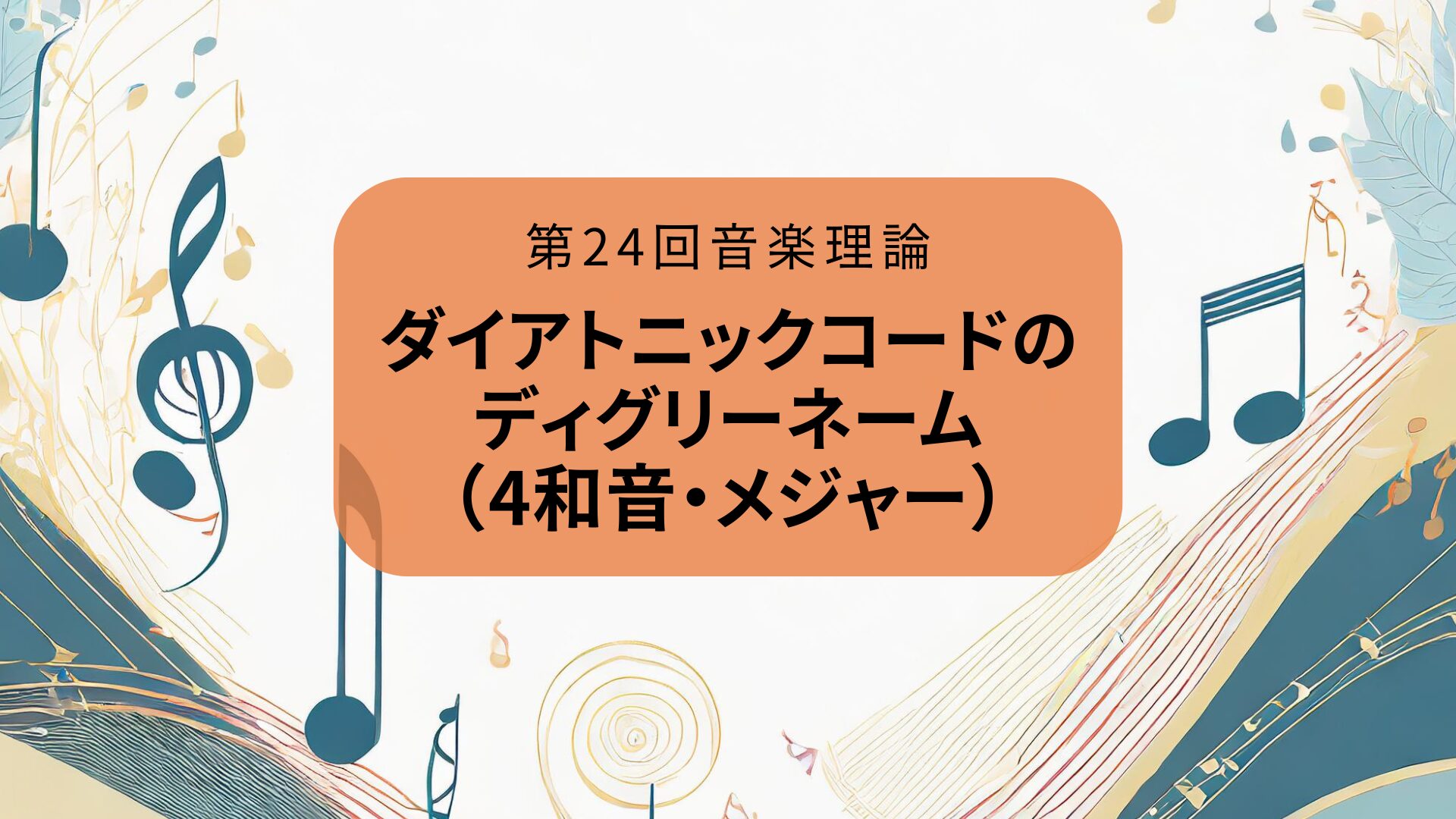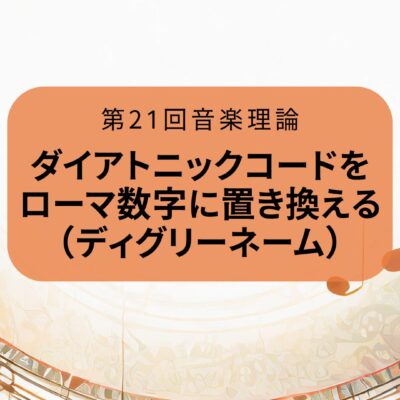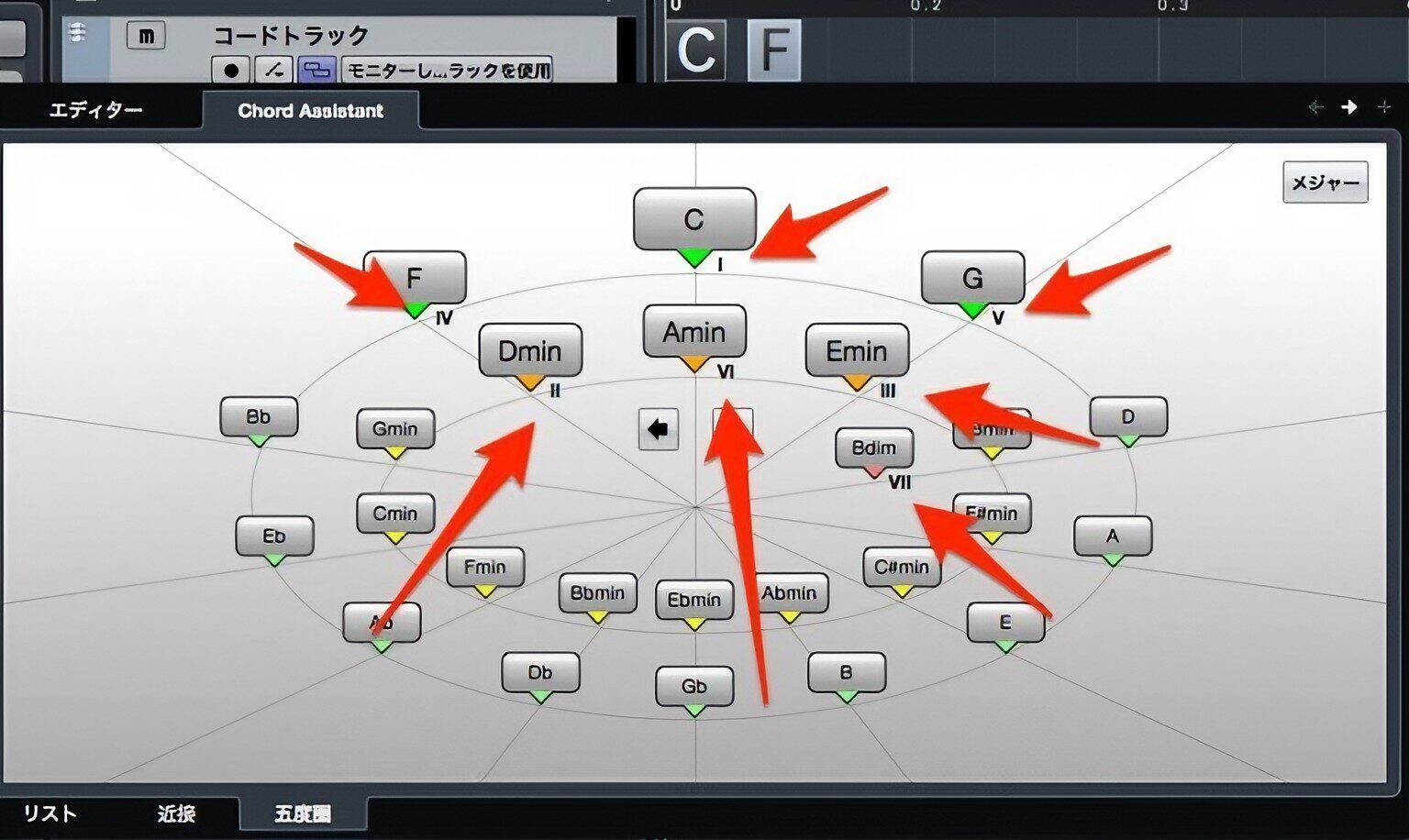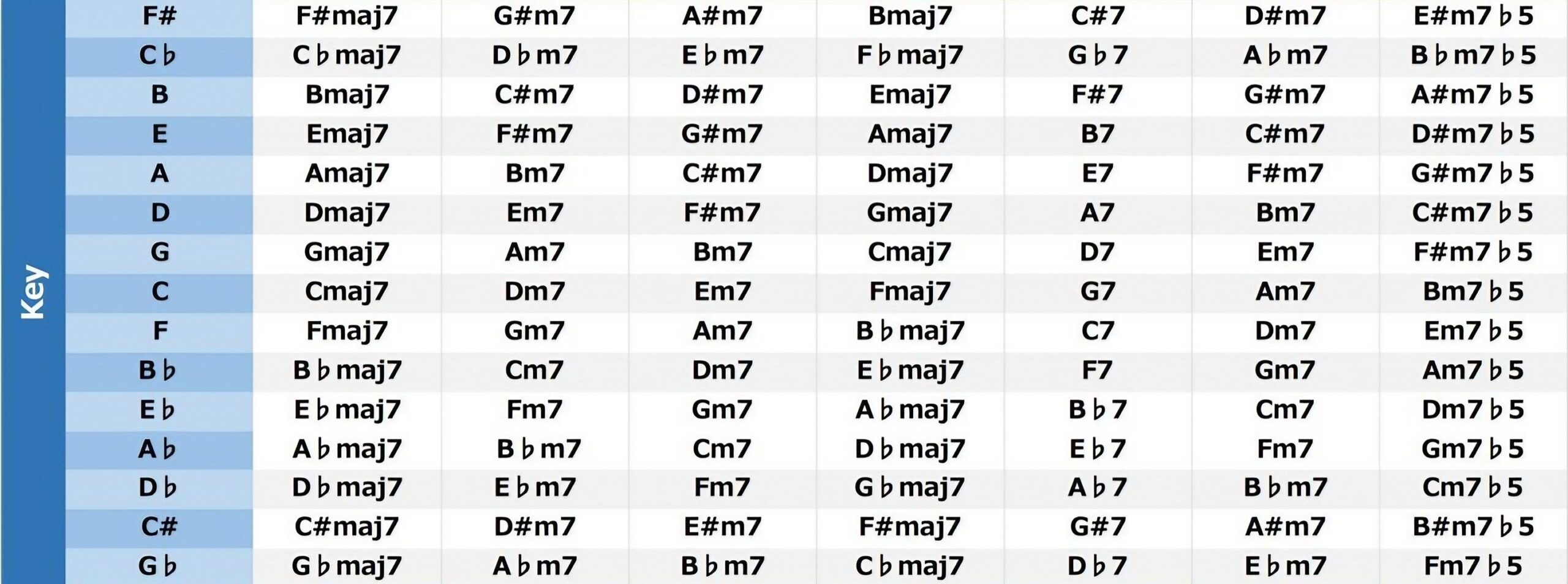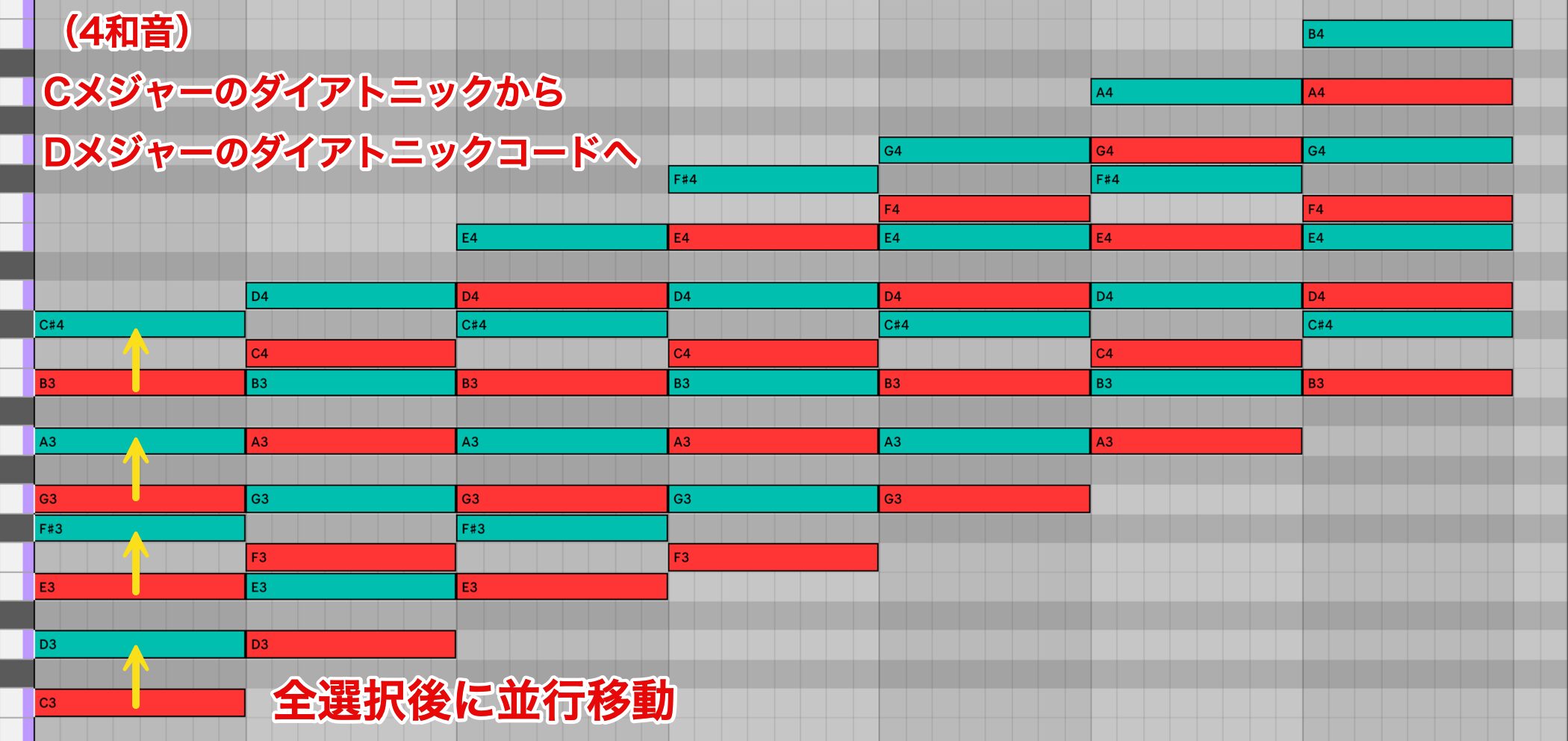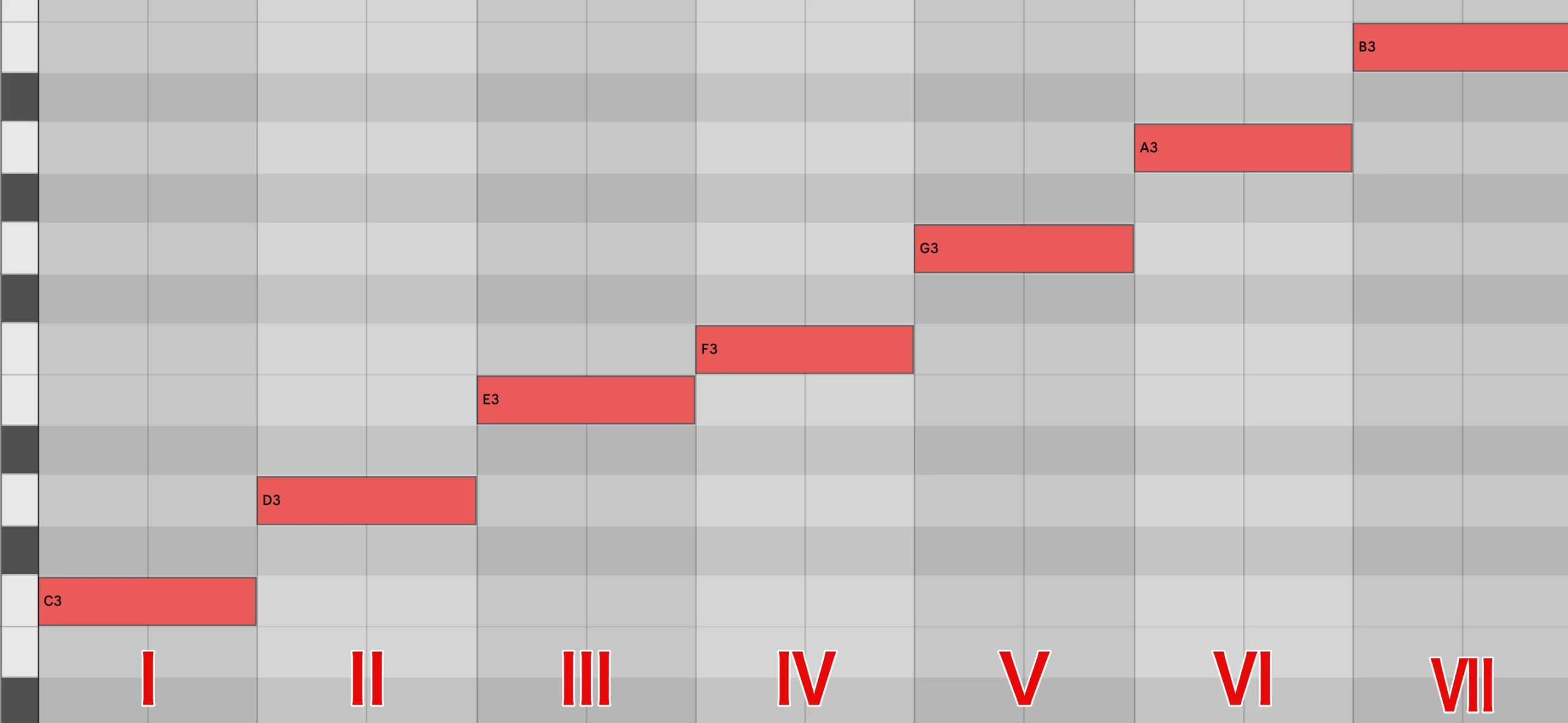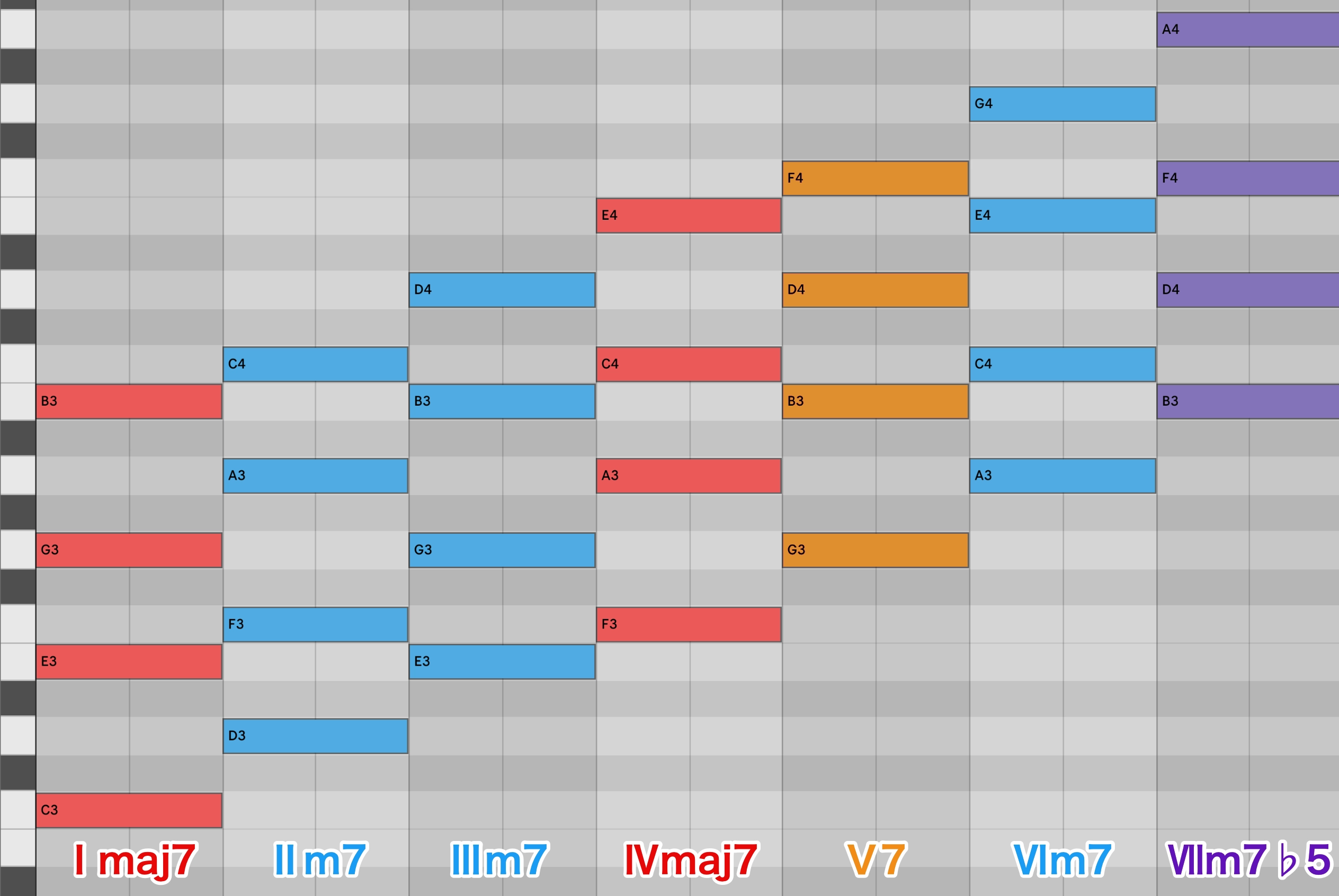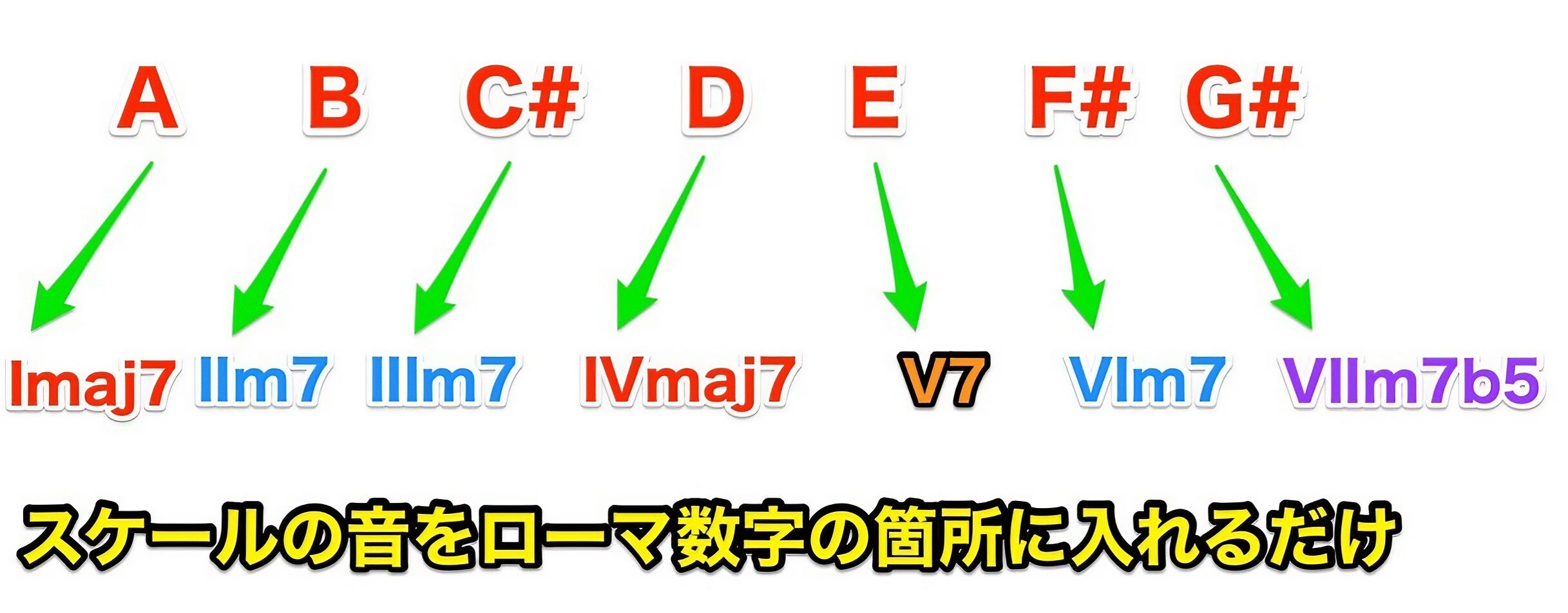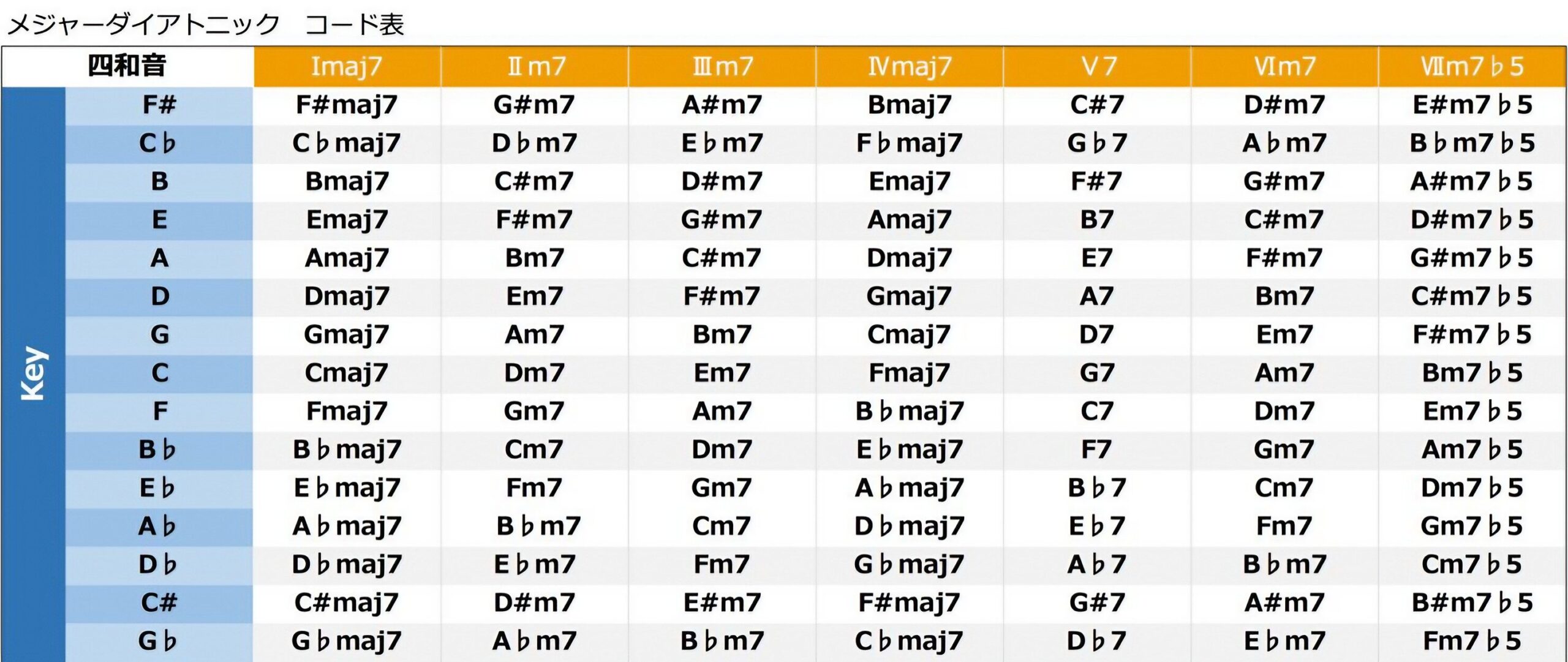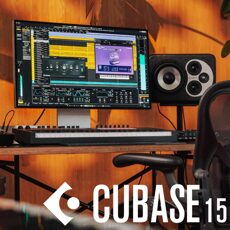ダイアトニックコードのディグリーネーム置き換え(4和音・メジャー編)/音楽理論講座
4和音のディグリーネーム
今回は4和音のダイアトニックコードについて、ローマ数字(ディグリーネーム)に置き換える方法を学んでいきます。
4和音は音楽制作や解析の際に頻繁に出てくるため、ぜひマスターしましょう。
前回の21回目の内容が理解できていると、今回の内容は非常に簡単に感じられるはずです。
未読の方は、まずそちらから学んでください。
解説に使用する表は、下記よりダウンロード可能です。
学習にお役立ていただければ幸いです。
https://sleepfreaks-dtm.com/wordpress/music/Major_Diatonic_Tetrad.zip
ダイアトニックコードの法則性は3和音と同じ
まず、4和音のメジャー・ダイアトニックコードを一覧にしてみましょう。
3和音と同様、これらを丸暗記するのは非常に大変です。
しかし、もうお気づきかと思いますが、4和音にも3和音と同様の法則性があります。
- Key=Cメジャー
- Key=Dメジャー
このように、いずれも
メジャー・セブンス、マイナー・セブンス、マイナー・セブンス、メジャー・セブンス、ドミナント・セブンス、マイナー・セブンス、マイナーセブンス・フラットファイブ
の並びになっていることがお分かりいただけると思います。
DAW上であれば、ノートを全て選択し平行移動して簡単に作成することができます。
この法則性に注目し、各スケールの度数をローマ数字に置き換えて覚えましょう。
スケールに沿ってローマ数字を振る
3和音のときと同じ手順で、スケールの始まりの音から順番にローマ数字を振っていきます。
ここからダイアトニックコードを作っていきましょう。
手順は18回目に掲載した通りです。
次に、ローマ数字の隣に各コードの性質を付記していきます。
これで完成です。
このローマ数字の箇所に各メジャースケールの音を当てはめるだけで、メジャーのダイアトニックコード(4和音)を網羅できるということになります。
※ディグリーネームの記述法には、メジャーの横に「△」をつけたり、マイナーは小文字(「ⅲ」等)で示すなど、様々な表記法があります。
本講座では上記の記述で統一します。
ディグリーネームの活用
スケールの置き換えを、Key=Aメジャーで試してみましょう。
ここまでの学習内容を活かせば、非常に簡単ですね。
ちなみに、それぞれの呼び名は以下の通りです。
- Imaj7 =ワン・メジャーセブンス
- IIm7 = トゥー・マイナーセブンス
- IIIm7 = スリー・マイナーセブンス
- IVmaj7 = フォー・メジャーセブンス
- V7 = ファイブ・セブンス(ドミナント・セブンス)
- VIm7 = シックス・マイナーセブンス
- VIIm7b5 = セブン・マイナーセブンス・フラットファイブ
最後に、ローマ数字ありのメジャーダイアトニックコード(4和音)一覧表を載せておきます。
ぜひ、学習にご活用ください。
(リンク先を保存で大きいファイルを取得できます)。
次回は4和音も交え、ディグリーネームを使った簡単な解析や転調、ノンダイアトニックコードについてなど、実践的内容を扱います。
3和音のみの時よりもさらに理解が深まると思いますので、ご期待ください。




